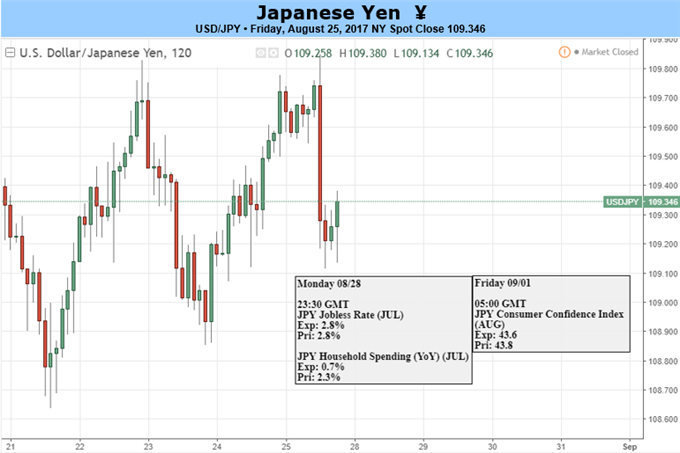
Fundamental Forecast for JPY: Neutral
This week was somewhat of a wash for the Japanese Yen, as the currency moved sideways against the British Pound, Aussie and U.S. Dollar. The Yen did show a bit of deference to trends of strength in the Euro and CAD, as the one piece of significant Japanese data for this week indicated continued weakness in inflation. The bigger item of interest across global markets was the Jackson Hole Economic Symposium, where investors came in with piqued interest around the prospect of Quantitative Tightening. But in an excellent example of wordsmithery, Fed Chair Janet Yellen didn’t touch any topics having to do with monetary policy or outlook; as she instead focused on banking regulation and reform, specifically dialing-in on recent efforts to repeal policies that were put in to place after the Financial Collapse.
As we discussed last week, the inflation print released on Thursday was the highlight of Japan’s economic calendar. This was inflation for the month of July, and for the fourth consecutive month inflation came in at .4%, which is heavily below the 2% target from the Bank of Japan. This means that we’re probably nowhere near any rate hikes or policy tightening, such as what Central Bankers in Europe are currently staring down. This also means that there are very few reason for investors to look at the long side of the Yen under the expectation that anything on that front will change anytime soon.
But as we’ve been seeing for much of the year, the Yen has displayed some element of strength against many major currencies. This is likely related to the ‘unwind’ effect as risk aversion has begun to show with a bit more prominence in key areas, such as European stocks and, more recently, U.S. equities. With Japanese rates remaining in negative territory while inflation continues to languish heavily below the BoJ’s target, the Yen could still be fairly attractive for carry trade scenarios. This is especially applicable when matching up the Yen with currencies that are seeing higher rates get priced-in, like with what we’ve seen out of Europe so far this year and, more recently, Canada. But – when the prospect of principal losses outstrips that of the potential gain on the carry, traders will ‘unwind’ positions as they duck for cover, and this is probably why the Yen has been relatively strong against a wide swath of currencies from slow-growing economies.













Leave A Comment